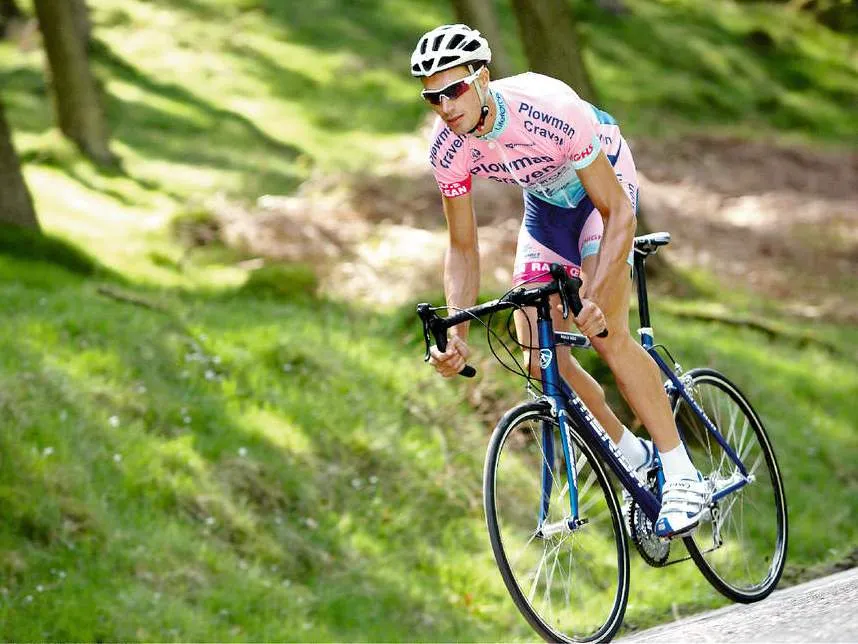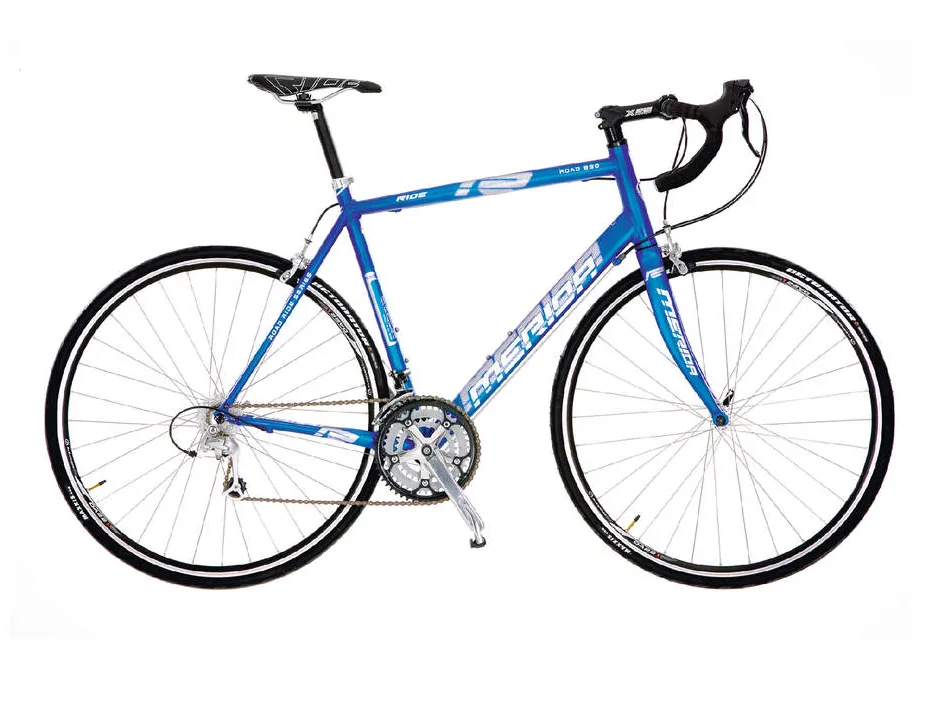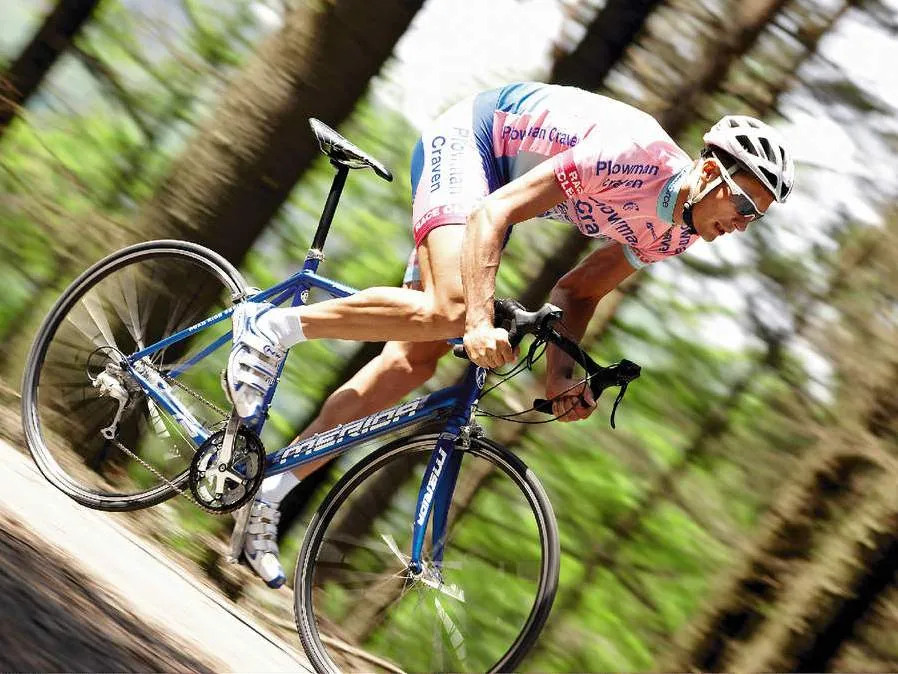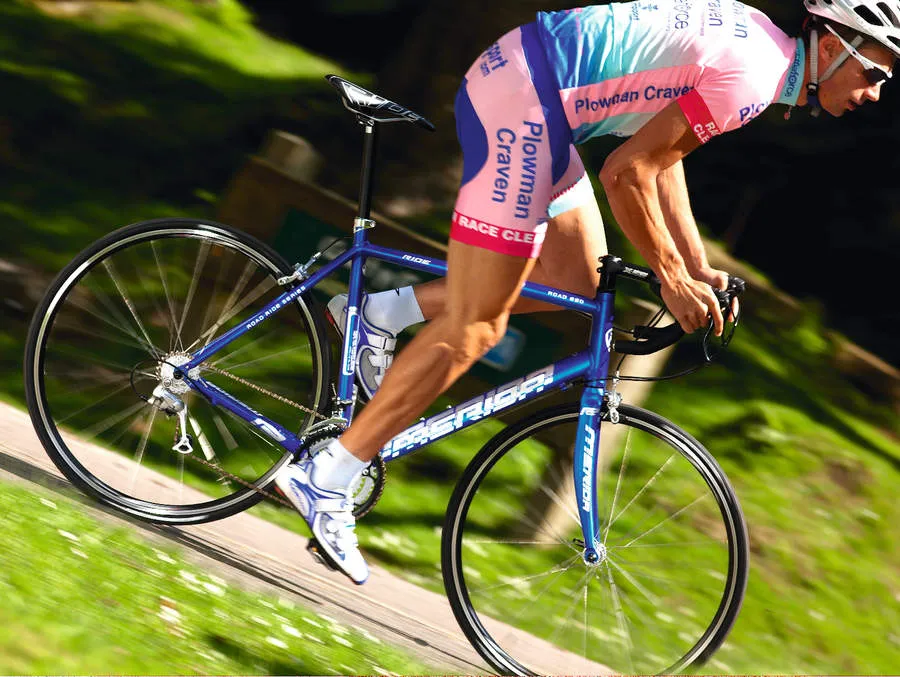It’s easy to dismiss cheaper bikes, but we found this entry-level road bike is an ear-to-ear grinner – especially as we passed riders on bikes costing four times the price.
The Merida reminded us of what it was like heading out on a road bike for the first time, way back when we were kids. We’re big kids now but the Merida took us back to a time when that excitement of speed fuelled our desire to ride.
The bike’s quality of ride, especially for such a low price, is excellent. It’s not perfect and for £400 it never will be, but it’s certainly a competent road bike, and just goes to show that you really don’t have to spend in excess of £1000 to enjoy yourself.
As a first time road bike it’s a great option and the neutral handling won’t scare off riders looking for a way into a new sport, but the riding position is also ideal for commuting and training.
Ride & handling: beginner-friendly fun
The 880 is a bit slow to get going because of the weight of some of its parts (see below) but fun at speed and it won’t scare off first time riders
The riding position is commanding and relatively comfortable rather than head down fast. The neutral stance is perfectly suited to the relative beginner riders the bike is aimed at and is ideal for training and long distance commutes.
The fork delivers precise steering and is stiff but a little harsh; this causes a bit of bone shaking when the front wheel runs over a long section of rough road.
We did notice a little toe overlap with the front wheel, where you catch your toe on it steering at slow speeds. Even on the large test bike it was evident with size 10 feet, but this is the payoff you make for the shorter reach and longer, higher head-tube.
Frame & fork: excellent trickle-down features for the money
The heart of the 880 lies in the frame’s triple-butted and shape-formed 6000 series alloy tubing. Direct and responsive, it gives the feel of a frame costing a lot more and classes the 880 as a proper road bike. A very peasant surprise at this price.
Examples of trickle down design cues from Merida’s higher end bikes are numerous. The flattened chainstays add a bit of feel to the rear end and the Cone Head steerer tube has a larger diameter at the base to increase the area where it meets with the down-tube which increases front end stiffness. The matt paint job looks good and doesn’t spoil should you scratch it.
The frame lacks mudguard eyelets which is a shame as a lot of people will buy a bike like this for winter training and commuting. There’s clearance for a pair of clip-ons but they’re not as good.
We’re told Merida’s road development is driven by an Italian based team, where it apparently doesn’t rain… Merida says eyelets could be appearing on the 2010 range.
Equipment: hefty but effective; triple chainset is very welcome
It’s harder to get excited about the kit level but that’s because a frame of this quality deserves something along the lines of Shimano’s 105 group and lighter wheels. But the 880 is a £400 road bike which means componentry is on a tight budget and what it does come fitted with is fine; slightly heavy but it gets the job done.
The triple chainset is one of the most overweight pieces. All three chainrings are steel, which adds up quite a bit of excess baggage. The bonus is that you won’t struggle to find the correct gear with the front combination of 30/42/52-tooth rings and the 12-24-tooth cassette. The 880 is also available in a double chainring version but we like the extra range that the triple chainset provides.
Shimano 2200 Dual Control levers take care of gear shifting and braking. The single step of the 2200’s inboard upshift lever is a little annoying when changing gears at the rear; each gear has to be engaged separately and this slows down the speed at which you can move the chain down the cassette.
Still, the 2200 is a dependable lever and a faster shifter would add considerable cost.
It sounds like we’re giving the Merida a bit of a hard time and picking at the finer detail, but we’re not. The quality of ride for the price was a genuine surprise. So much so it had us looking at the 880 as if it was up against bikes costing £200-£300 more.
Wheels: dependable and true
Things don’t get much lighter with the wheels. They certainly do the laws of angular momentum proud and the heavy rims just want to keep on spinning. The willingness to maintain momentum doesn’t make them the fastest climbing or sprinting wheels, but they hold their speed and the whole bike feels very stable. They’re also incredibly tough and stand up well to abuse. We even found ourselves doing a bit of impromptu green laning.
The tough but grippy 700x23 Maxxis Detonator tyres look and ride more like a pair of 25mm tyres. Their width helps sofen the ride, making them a good choice for varied conditions.



